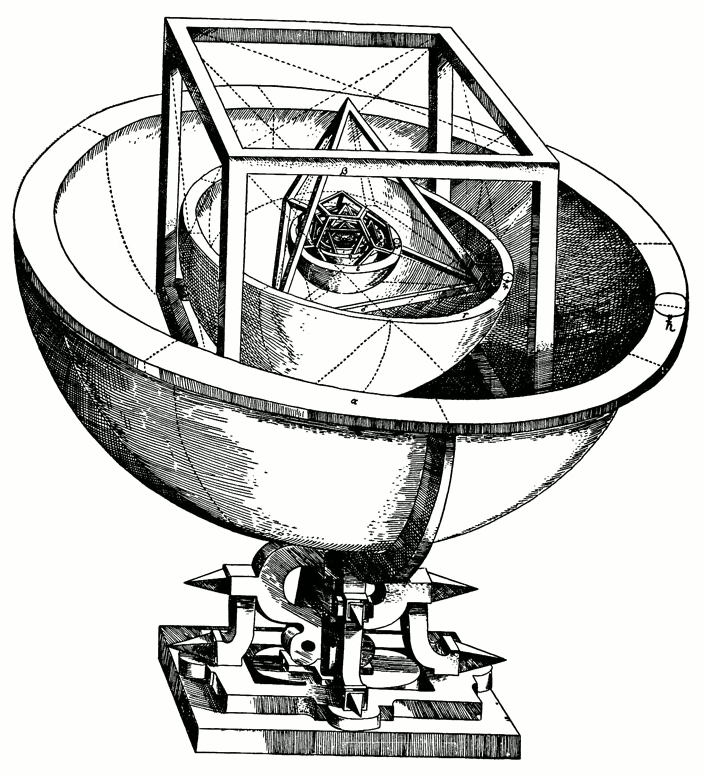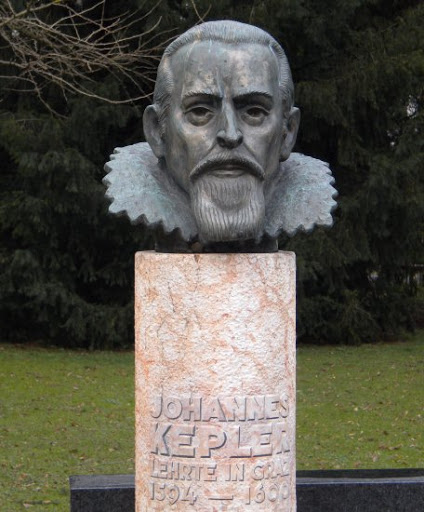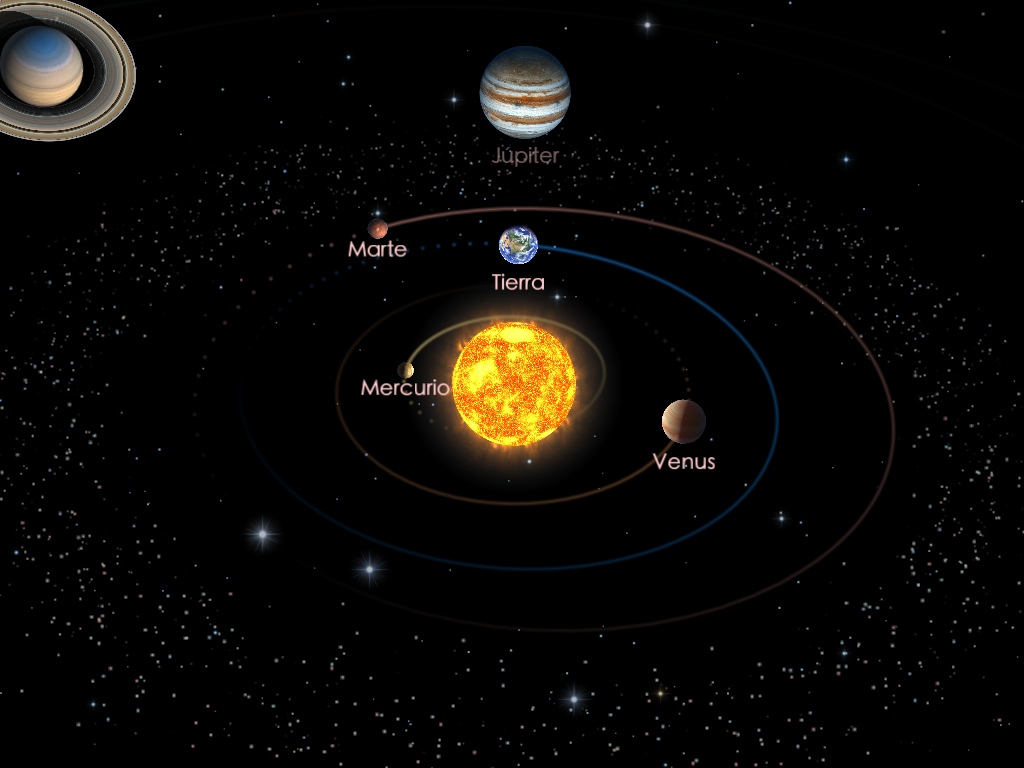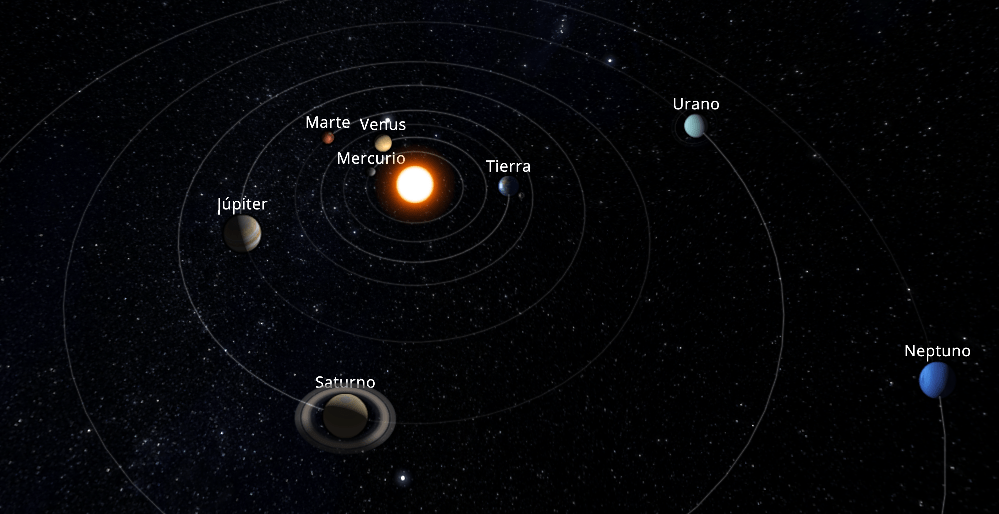Have you ever wondered who it was? Johannes Kepler? Well, he was a very important German scientist, who stood out for his knowledge in astronomy and philosophy, he came to create and demonstrate the existence of the three laws of planetary motion, which today are called Kepler's laws. We invite you to read this article to learn more about his life and his work.
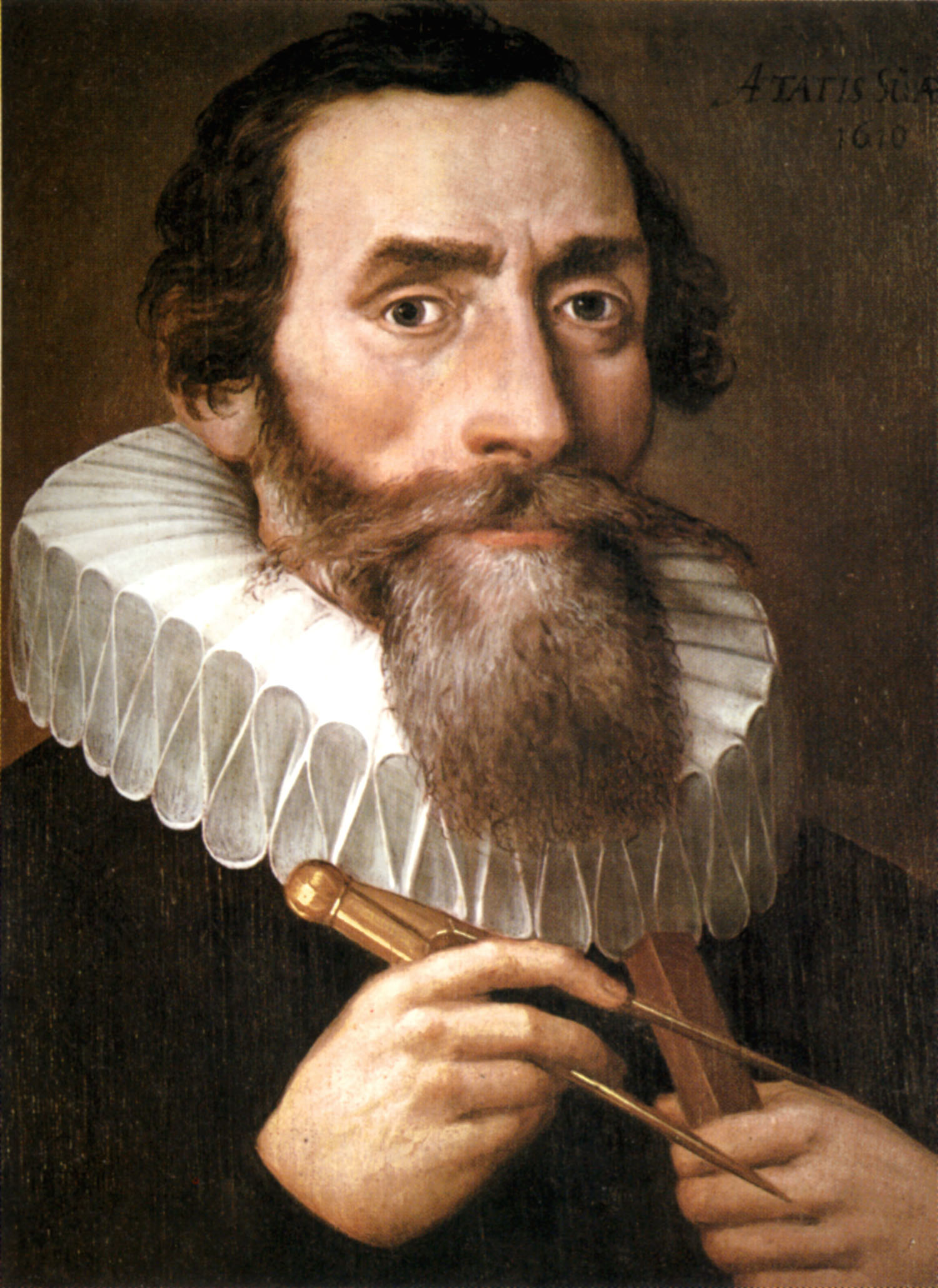
Biography of Johannes Kepler
In his time Johannes Kepler it was so important that he came to work together with Tycho Brahe, later replacing him in the position of imperial mathematician of Rudolf II. Due to his extraordinary achievements, the International Astronomical Union baptized a lunar astroblem with the name of Kepler in 1935. Let's learn a little more about his life
Childhood
The year of his birth was 1571, in the German city of Wurttemberg, which was then a dukedom. Since childhood he was a person afflicted with many ailments, such as myopia, stomach ailments and was tormented by headaches. When he was three years old, he contracted the smallpox disease, the effects of which included extremely debilitating eyesight.
Although he always had serious health problems, he was always a lucid child, with great intelligence, who enjoyed making a great impression among the people who stayed in his mother's hostel, using his extraordinary gifts with mathematics. In the year 1584 he managed to get him into the Protestant seminary in the city of Adelberg.
Studies
Due to his proven intelligence, in the year 1589 he began to study theology at the University of Tübingen. Finding himself there, he had the opportunity to have Maestlin as his mathematics teacher, who already had knowledge of the heliocentric theory of Copernicus and widely shared it.
Kepler followed the teachings of Pythagoras, and believed that God was the greatest geometer, creator of a harmonic universe, observing in the simplicity of the Pythagorean theory a characteristic of God's creative plan. He continued to study in Tübingen, even after obtaining a master's degree in 1591.
Marriage
Johannes Kepler he was married twice. His first marriage, the result of absolute convenience, was held on April 27, 1597, with Miss Bárbara Müller. This marriage, which was arranged by his relatives, made him the couple of a plump woman, with a simple spirit, who had a detestable character.
academic trajectory
In the year 1594 he left Tübingen, to go to Graz, a city located in Austria, where he pursued his career as a professor at the university, teaching Arithmetic, Geometry and Rhetoric, managing to dedicate his free time to a hobby that was the astronomy.
We are referring to a time when the difference between belief and science was not fully drawn, and the mechanics of the way the celestial bodies moved was still practically unknown. In fact, it was claimed that such movements obeyed divine laws.
While in Graz, he had published almanacs containing astrological predictions, which were composed by Kepler, although he disagreed with some of the guidelines.
Then, in the year 1600, he went to live in the city of Prague, which is today the capital of the Czech Republic, at the invitation of the well-known astronomer Tycho Brahe, who communicated with Kepler, having read his publications. Professor Brahe passed away in the following year and Kepler took over from him as the emperor's court mathematician and astronomer.
For a long time Johannes Kepler He maintained a theory that combined geocentrism with heliocentrism, to later transform his geocentric designs towards heliocentrism. Although he had accomplished his task, he continued to find serious discrepancies between the path that, according to his calculations, the heavenly bodies should have made and the one that they actually made.
This conclusion led him to speculate that, constituting Sun the body from which emanates the force that makes the planets rotate in their surroundings, when the path between a planet and the Sun was increased, the speed at which the movement was carried out had to be reduced. In order to make this statement, he had to get rid of the conception accepted thousands of years ago, that the journey made by the celestial bodies was done through circular orbits.
In the year 1612, he obtained the honorable position of mathematician of the states of Upper Austria, which made up the district of Linz. Despite the honors received and his discoveries, Johannes Kepler he was not satisfied.
He was convinced that harmony and simplicity were the rules that governed the Universe, that is why he was always looking for a simple relationship, by which the times of revolution of the planets, today known as orbital periods, and the distance to the planets could be explained. Sun.
Johannes Kepler It took him more than nine years to get this simple relationship and proceed to formulate the third law of motion of the planets, according to which the orbital period of a planet is proportional to the semi-major axis of the ellipse raised to the power of 3/2.
In the year 1628, he entered to render his services to the order of A. von Wallenstein, in the city of Sagan, at the time province of Silesia, who gave him his word to cancel the debt that the Crown had contracted with him in the years that had passed, but he never fulfilled it. Barely a month before he died, due to fever, Johannes Kepler he had left Silesia to find a new position.
Death
Johannes Kepler He died in the year 1630, in the city of Regensburg, while traveling with his family from Linz to Sagan. On his tombstone was engraved the following epitaph, which was created by him:
“I measured the heavens, and now I measure the shadows.
In the sky the spirit shone.
On earth rests the body. "
scientific work
In the year 1594, when Johannes Kepler He left the city of Tübingen and went to Graz, in Austria, he created a hypothesis of complex geometry to try to explain the separations between the planetary orbits, which were wrongly imagined to be circular at that time.
Analyzing his hypothesis, Kepler figured that the Orbit of the planets were elliptical. But those first deductions only coincided 5% with reality. He also stated that the Sun is the one that exerts a force whose magnitude decreases inversely proportional to the distance and causes the planets to move around their orbits.
In the year 1596, he managed to publish a treatise called Mysterium Cosmographicum. The importance of this work comes from the fact that it was the expression of the first extensive and plausible scientific demonstration of the geometric advantages of the Copernican theory.
The following year, in 1597, he published Mysterium Cosmographicum, in which he leaves express proof of the conveniences that, from the position of geometric science, derived from the theory of heliocentrism.
Johannes Kepler He was a professor of astronomy and mathematics at the University of Graz from 1954 to 1600, when he was offered the position of assistant to the Danish astronomer Tycho Brahe at the Prague observatory. By the time Brahe died in 1601, Kepler had taken over from him as imperial mathematician and court astronomer to Emperor Rudolf II.
Of his works produced in that period, one of the most relevant is Astronomia Nova, published in the year 1609. It was the great compilation of his painstaking efforts to calculate the orbit of the planet Mars, for which he tried almost exclusively to capture in it his computations on the orbit of this planet.
In Astronomia Nova he introduces two of his three well-known laws of motion of the planets, which today are called Kepler's laws. In the year 1610 he published Dissertatio cum Nuncio Sidereo, which dealt with the observations made by Galileo Galilei.
The following year, he was able to make his own observations regarding the satellites that were described by the Italian scientist, thanks to the help of a telescope, publishing the results of these observations in his work Narratio de Observatis Quatuor Jovis Satellitibus.
He was appointed mathematician of the Austrian states in the year 1612. While in that position he took up residence in Linz, where he wrote his Harmonices Mundi, Libri (1619), in which he set forth his third law, to demonstrate the linear relationship of the average distance from a planet to the Sun.
in the same period Johannes Kepler publishes the Epitome Astronomiae Copernicanae (1618-1621), where he manages to collect all his discoveries in a single publication.
The same relevance had his first textbook on astronomy, which was based on the principles of Copernicus, and which in the following three decades had an extraordinary influence, attracting many astronomers to Keplerian Copernicanism.
The last relevant work published while Kepler was still alive, were the Rudolphine Tables, in the year 1625. Based on the information compiled by Brahe, the new tables on the movement of the planets managed to reduce the average errors of the position real of a planet from 5° to 10′.
Later, the English mathematician and physicist Sir Isaac Newton took as a basis the theories and observations of the Johannes Kepler, as a theoretical basis for the formulation of his law of universal gravitation.
If you are interested, you can also see the Isaac Newton Biography.
Kepler also made important contributions to optics, managing to formulate the following:
- Fundamental Law of Photometry
- Full reflection
- First Theory of Modern Vision
- He developed an Infinitesimal System, predecessor of the Infinitesimal Calculus of Leibnitz and Newton.
Kepler's three laws
The German astronomer created the three well-known laws that bear his name, after analyzing the data of a large number of observations made by Tycho Brahe (1546-1601) about the movements of the planets, in particular on the planet Mars.
Johannes Kepler, using extremely complicated calculations, managed to conclude that there were relevant differences between the trajectory that had been calculated that the planet Mars would take and Brahe's observations, differences that in some cases reached 8 minutes of arc, in fact the observations of Brahe had an accuracy of about 2 minutes of arc.
These found differences helped him to discover what was the real orbit of the planet Mars and the other planets of the Solar System.
1st Law. Elliptical orbits
Kepler held, contrary to the circular theory, that the orbits of the planets are ellipses that have a small eccentricity and in which the Sun is located at one of its foci. If he looks at it closely, he gives us the impression that an ellipse is originally a circle that has been slightly flattened.
In theory, the name ellipse is given to a flat and closed curve in which the sum of the distance to the foci (fixed points, F1 and F2) from any of the points M that form it is constant and equal to the length of the major axis of the ellipse (segment AB). The minor axis of the ellipse is segment CD, it is perpendicular to segment AB and cuts it in the middle.
The eccentricity represents the degree of modification of an ellipse. An eccentricity of zero does not exist, therefore it would be a perfect circle. The greater the modification of the eccentricity, the greater the number of angles of the ellipse.
Orbits with angles equal to one are called parabolic orbits, and those greater than one are called hyperbolic orbits.
If the distance between the foci F1F2 is equal to zero, as in the case of the circle, the eccentricity will also result in zero.
The conclusion reached by Kepler is that the planetary orbits are elliptical, with a small modification or sinuosity. In the case of the planet Earth, the value of the sinusity is 0.017, the planet with the greatest degree of modification in its ellipse is Pluto with 0.248, followed closely by Mercury, with 0.206.
2nd. law of orbits
The radius vector that unites the planets with the center of the Sun can cover the same areas in the same time. The orbital speed of a planet, which is the speed at which it moves on its orbit, is variable, inversely proportional to the distance from the Sun. Therefore, it is concluded that the greater the distance, the orbital speed will be lower, while at shorter distances, the orbital velocity will be higher.
The orbital speed of the planets will be the maximum, when they are at the point of their orbit closest to the Sun, which is called perihelion, and they will have a minimum speed at their furthest point from the Sun, called aphelion.
The vector of a planet is the imaginary line that joins the center of the planet with the Sun at a given moment. On the other hand, that orbital vector will be equal to the sum of time intervals that the planet takes to move from one vector to another, until completing one revolution.
With the conclusions reached by Kepler on his analysis of elliptical orbits, he found that as a plant was closer to the sun, it should move faster, finding that the time a planet moved from one vector to another, it should be the same for all transfers by the following vectors.
3rd. Harmonic law and Kepler's star
In the month of October of the year 1604, Johannes Kepler was able to see the supernova in our Galaxy, which would later be named Kepler's star. That same supernova could be seen by other European scientists, such as Brunowski in Prague, who corresponded with Kepler, Altobelli in Verona, and Clavius in Rome, and Capra and Marius in Padua.
Kepler, based on the work of Brahe, made a detailed analysis of this appeared supernova, in his book De Stella Nova in Pede Serpentarii, by its translation, the New Star in the Foot of Ophiuchus, laying the foundations for his theory that the Universe is always in motion, and that it is influenced by important modifications.
The intensity of the star was such that it could be observed with the naked eye within 18 months of its appearance. This supernova star is located only 13.000 light years from planet Earth.
Subsequently, it has not been possible to observe another supernova within our own galaxy. Due to the evolution of the brightness of the star that has been measured and observed, today it is believed that it is a type I supernova.
Summary of Kepler's Works
As a result of his research, carried out throughout his life, Johannes Kepler He published the following works, which have been ordered chronologically:
- Mysterium cosmographicum (The cosmic mystery, 1596).
- Astronomiae Pars Optica (The optical part of astronomy, 1604).
- From Stella nova in pede Serpentarii (The new star at the foot of Ophiuchus, 1604). On October 17, 1604 Kepler observed the appearance of a new star. The observation, which was confirmed by other European astronomers, deeply aroused his curiosity. In addition to the interest from the astronomical point of view, it was an essential philosophical question, since Kepler always defended the theory that the universe was not something static. At present it is known that Kepler's Star was a class I supernova.
- new astronomy (New Astronomy, 1609).
- Dioptric (Diopter, 1611). Based on the myopia that he suffered from, Kepler was always interested in optics. The practical conclusions of this work gave rise to glasses or lenses that helped myopic and presbyopic people to see better, also contributing to the design of a new telescope, which was used for astronomical observations for years, which received the name of the Kepler telescope. .
- De Vero Anno quo Aeternus Dei Filius Humanam Naturam in Utero Benedictae Virginis Mariae Assumpsit (1613). Due to the special knowledge that he had acquired, Johannes Kepler wrote this curious and brief work in which he demonstrated with scientific data that Jesus had been born in the year 4 BC
- Epitome astronomiae Copernicanae (published in three parts, 1618-1621).
- harmonize world (The harmony of the worlds, 1619).
- Tabulae Rudolphinae (1627)
- somnium (The Dream, 1634), is a fantasy story, in which the protagonists can majestically observe the spectacle of the Earth turning on itself. Due to this work, it has been possible to affirm that Kepler was the first science fiction author in history.
Apart from his work as an astronomer and mathematician, Johannes Kepler He became a very important astrologer. Two forecasts whose were very relevant, the first related to the crops, and the second linked to who would win a battle against the Turks, gave him prestige, being considered a master in the art of interpreting the oracles of the Stars.
This activity, of which Kepler was not particularly proud, was able to give him significant economic income at a time when his income was going through difficult times.
Such was his disagreement that it is claimed that Johannes Kepler even said that the harlot astrology should support her mother, astronomy, because the wages of mathematicians are so low that, inevitably, the mother would have to go hungry. if the daughter did not obtain sustenance. This statement leaves no doubt about Kepler's view of astrology.
- The Rudolphine Tables. It is not a work of Johannes Kepler as famous as his well-known laws of planetary motion, and despite this, they constitute one of the most important peak works of Kepler, because they are an essential element in the beginning of the new astronomy.
Those tables were originally a work commissioned by King Rodolfo II, which is why they bear the name of Rudolfinas. Originally they were entrusted to Tycho Brahe, but due to his death, the work was then entrusted to Kepler, who applied his new theories in its elaboration, in order to perfect the calculations of the positions of the Sun and the Moon.
This allowed him to be able to calculate the times when the eclipses would take place, not only at that time, but for any date, whether before or after the Christian era.
When analyzing it, it can be concluded that Las Tablas was a truly titanic task, offering a demonstration of the hundreds of pages with thousands of calculations that Kepler had to do in the course of 22 long years. Fortunately for him, in carrying out a large number of calculations, Kepler was able to use, because they had already been introduced into the mathematical sciences, Napier's logarithms, the practice of which Kepler perfected.
The relevance of Las Tablas Rudolfinas was such that they had an essential impact on the preparation of ephemeris calendars and on navigation for more than 200 years.
